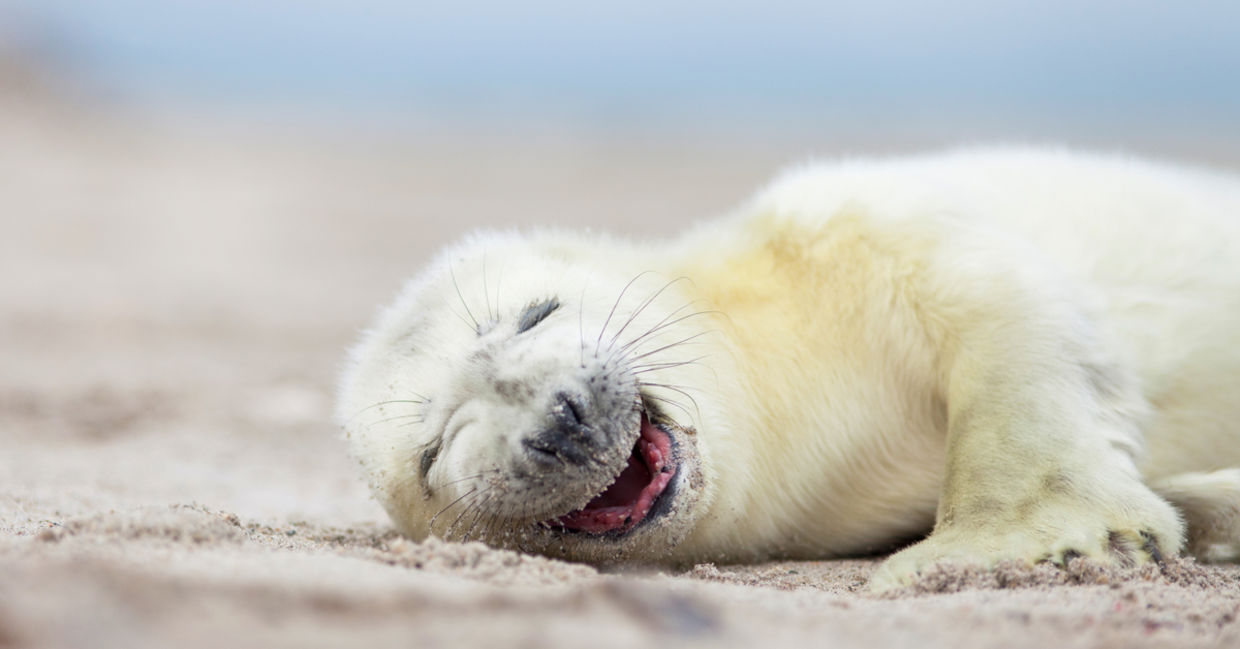
(Jenny Sturm / Shutterstock.com)
Just like in people, it can start with a little giggle or chuckle and quickly evolve into full, body-shaking, exhilarating, hilarious laughter. Or it can be a more delicate expression of joy, inaudible to humans, but quietly shared over an in-joke via “ultrasonic” vocal signals, as in the case of rats. And, as a new article on openculture.com details, an UCLA review of multiple research papers finds laughter a part of the lives of 65 animal species and counting, from seals to cows!
The science of animal laughter
Just like in humans, the review’s authors, primatologist and University of California, Los Angeles (UCLA) anthropology student Sasha Winkler, and UCLA professor of communication Greg Bryant, found that laughter plays a significant role in the lives of numerous animals.
These researchers took a broad look at laughter across the animal kingdom. To do this, they combed through multiple empirical studies into vocal play signals that might be analogous to laughter, discussing their findings in an article in the journal Bioacoustics.
And some of the 65 species of animals known to laugh can laugh just like us, or almost like us! Sifting through studies of the play behavior of various animal species, the UCLA media release shares, researchers tracked vocalization patterns that resemble human laughter.
Winkler, for instance, explains in a UCLA interview, that the laughter of chimpanzees sounds acoustically similar to human laughter with some differences: “Like, they vocalize in both the in – breath in outbreath,” she shares.
Overall, these 65 species in which laughter has been documented include assorted primates, domestic cows and dogs, foxes, mongooses and seals as well as three bird species including parakeets and Australian magpies.
At least 65 animal species can LAUGH just like humans - including cows, dogs, seals and mongooses, study finds https://t.co/peJmhIwt91
— Daily Mail Online (@MailOnline) May 10, 2021
The researchers were aware that because what constitutes “play” in many animals is rough-and-tumble, and can resemble fighting, their careful parallel focus on play sounds could help emphasize non-aggression during such physical moments so they zoomed in on expressions of joy.
They also noted the attention paid in scientific literature to other features of play behavior in animals. These include body language such as the “play bows” made by dogs, and the “play faces” seen in primates.”
Why study laughter in animals?
The UCLA research authors also believe that their study of the available literature on laughter in numerous animal species sheds light on human laughter. It can explain its functions and helps us better understand human social interaction:
“Close examination of play vocalizations across disparate species helps illuminate the nature of human laughter, one of our most common and mysterious vocal behaviors,” they suggest.
Animals Laugh Too
— Open Culture (@openculture) January 11, 2022
UCLA Study Finds Laughter in 65 Species, from Rats to Cows https://t.co/yE2CYzm5Hk pic.twitter.com/M0Kt7jAHuJ
WInkler and Bryant note that laughter vocalizations in people have evolved from play-specific sounds that serve positive functions like easing participants into beneficial interactions, into sophisticated and pragmatic signals useful for interacting in complex social situations too.
“When we laugh, we are often providing information to others that we are having fun and also inviting others to join,” Winkler said. “Some scholars have suggested that this kind of vocal behavior is shared across many animals who play, and as such, laughter is our human version of an evolutionarily old vocal play signal.”
As the authors conclude, these take in a range of positive emotional tools; things like helping us negotiate relationships, signaling friendliness, and managing emotional experiences. Laughter also helps encourage social bonding and builds upbeat emotional connections between people.
YOU MIGHT ALSO LIKE:
Superheroes Offer Joy and Hope to Kids in Hospital
11 Happy Songs to Instantly Lift Your Mood!
Creating Your Ultimate Recipe for Happiness







